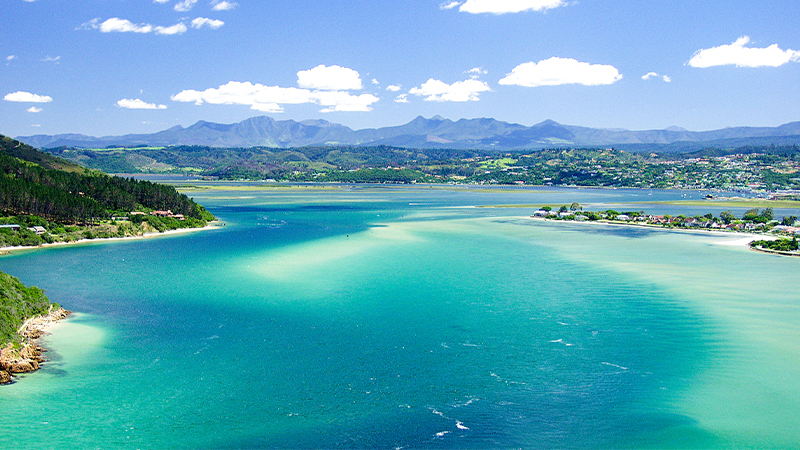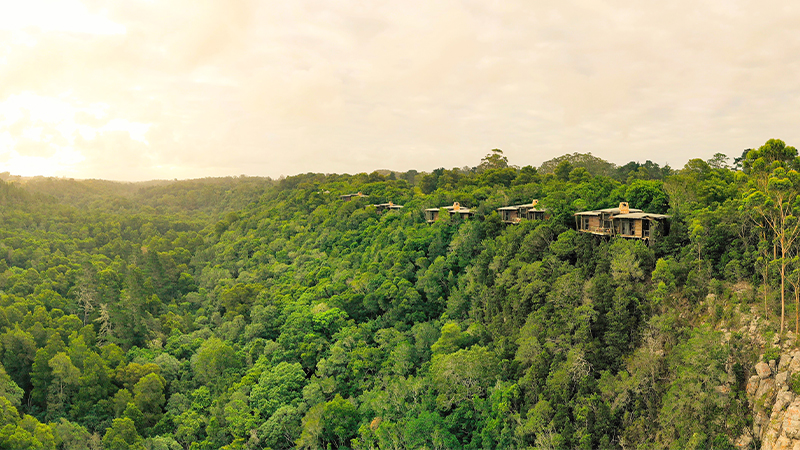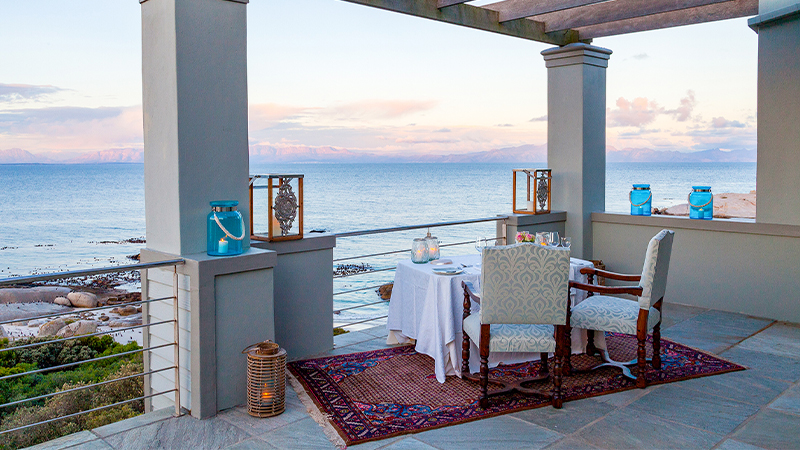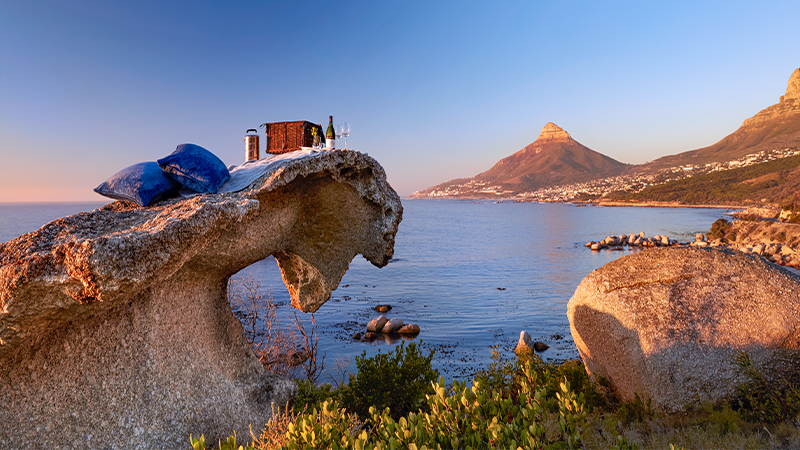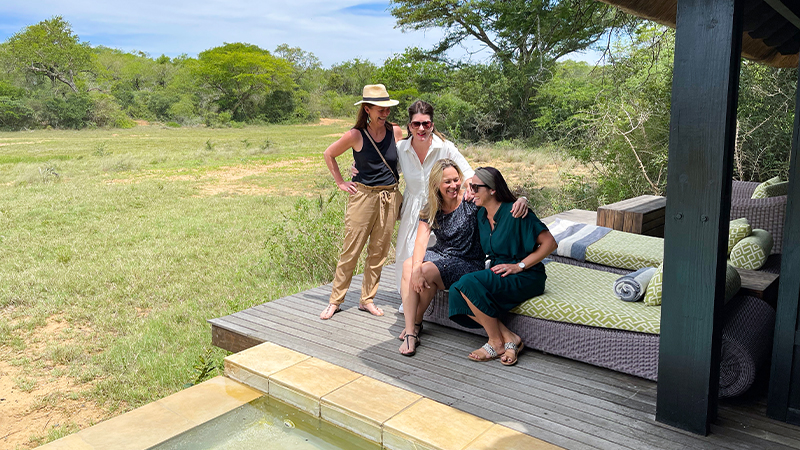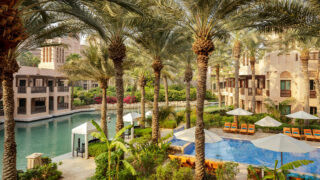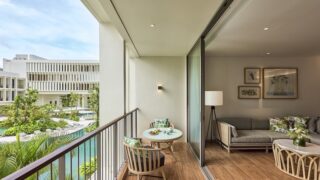Expat Living’s LARA SAGE becomes a fauna and flora explorer as she shares some lesser known natural highlights. Here are some things to see in South Africa from whales breaching along the coastline and penguins ambling through suburbia, to tree canopies alive with birds.
#1 Whales in De Hoop Nature Reserve
Considered the ultimate place in South Africa for land-based whale watching (from July to November) the De Hoop Nature Reserve, with its 51 kilometres of coastline, offers towering white sand dunes, limestone cliffs and turquoise rockpools. You’ll also experience the wonderful coastal fynbos, a distinctive type of vegetation found here.
The reserve offers a wide range of outdoor activities including walks along the deserted coastline or through the fynbos plains, as well as mountain biking and snorkelling in the rockpools. Or just while away your time on the quiet coves and beaches. More than 260 bird species are found here, including a colony of endangered Cape Vultures endemic to the nearby mountains. Hikers and cyclists can experience close-up encounters with Cape mountain zebras, elands, antelopes, baboons and ostriches.
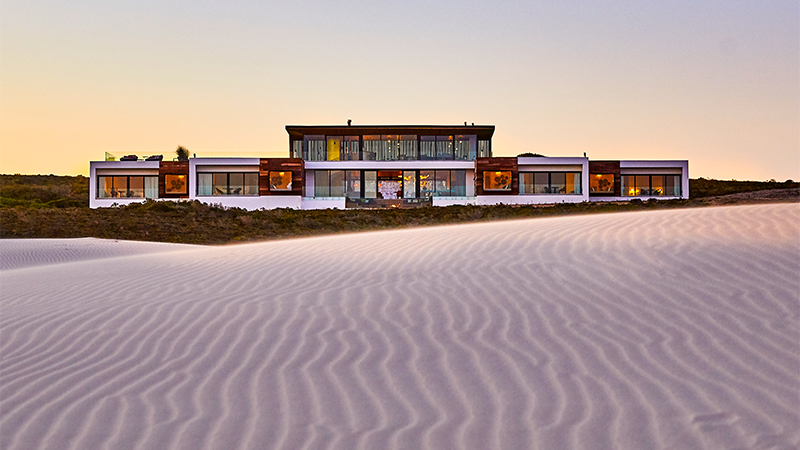
Morukuru Beach Lodge is a boutique style eco-lodge in the 36,000-hectare De Hoop Nature Reserve. Fully off-grid, it offers just four Ocean View Suites and one Honeymoon Suite. Nearby Morokuru Ocean House, meanwhile, is a decadent, fully staffed sole-use villa. Whichever you choose, this is a great destination for couples or small families travelling the so-called “Garden Route” of the Western Cape, or a wonderful add-on to a Cape Town stay. The properties have all you need, from dune boards for sand surfing to water shoes for the coves. It’s a stylish setting for escaping crowds and being pampered in a sustainable way – all in a jaw-dropping natural location.
#2 Seahorses in Knysna Lagoon
Knysna is a small coastal town on the Garden Route built around a large warm-water estuary fed from the Outeniqua Mountains. Every day, 70 percent of the estuary water flows in from the sea and out again, through adjacent cliffs known as the Knysna Heads. The result of this fluctuation is a unique setting of wetlands and waterbirds.
Below the surface lives the endangered Knysna seahorse, which has the smallest geographical range of any seahorse – it’s found in only three estuaries in the world. Knysna seahorses are approximately 6.5cm in length, and they hatch between seven and 200 tiny babies after a gestation period of between two and seven weeks (depending on the water temperature). This was the first seahorse species to be officially classified as endangered. Seahorse populations worldwide are threatened by the degradation of estuaries, sea grass beds and mangroves. They are vulnerable to temperature fluctuations, and accidentally captured in fishing gear, as well as being over exploited for use in traditional medicines and the aquarium trade.
Leisure Isle Lodge sits on an unassuming island within a protected lagoon, linked to the mainland by a narrow causeway. Wake up to changing tides with delicious breakfasts served on the deck overlooking the lagoon. Take an island stroll, try your hand at a little lagoon fishing, enjoy a leisurely swim in one of the island’s safe bays or beaches, paddle a canoe, take a dip in the eco-friendly swimming pool or play golf at the esteemed courses nearby. It’s less than a 10-minute drive to the centre of Knysna with its waterfront bars and restaurants, where oysters and fine wines flow.
#3 Life in the forest canopy
High rainfall all year round nurtures what is now the largest forest complex in Southern Africa. Wind carrying moisture from the coast rises inland over a series of terraces until it hits the jagged peaks of the Outeniqua and Tsitsikama Mountains. Indiscriminate exploitation of these tall forests was stopped in 1939 when the region was closed to all woodcutters.
The suites at Tsala Treetop Lodge are top-notch – the epitome of exclusivity and privacy, with forest-facing private decks and plunge pools. And the sophisticated one- and two-bedroom stilted villas are literally set in the tree canopy of this indigenous forest.
A comfortably warm summer extends from October right through to April. In mid-summer the days are nice and long, with the sun setting around 7.30pm and rising at 5.30am. Winter days are generally very mild but nights and evenings can be refreshingly cool. There’s also a cold spell from time to time; you can enjoy the peaceful mist or gentle forest rain trickling against the glass for a day or two. The luxurious suites offer all the creature comforts: heated towel rails, large bathtubs, cosy fireplaces and floor-to-ceiling glass windows to look out into the trees. It’s a destination for all seasons.
#4 Penguins on the Cape Peninsula
Many of us saw videos in the early days of the pandemic that showed wildlife “reclaiming suburbs” around the world. Some were hoaxes, but the comical penguins of Simon’s Town were legitimate!
The previously named jackass penguins (on account of their donkey-like braying) have always made this seaside town their own. Most African penguins breed on islands off the coast, but just two colonies are land-based. They choose a mate for life, breeding in large numbers on the white sandy beach; then they emerge in the streets, entertaining onlookers as they waddle along with their own agenda! The birds return each season to nest in the dune vegetation below the comfortable accommodation of Tintswalo at Boulders. This boutique villa of nine private suites has access to the Table Mountain National Park Marine Protected Area along soft, sandy beaches sheltered by granite boulders. With their uninterrupted Indian Ocean views, the suites are named after famous ships, and individually decorated to pay homage to them; you’ll find “Mayflower” and “Cutty Sark”, among others.
After relaxing at the pool, take a stroll to Simon’s Town on the shores of False Bay; it served as a naval base and harbour for more than two centuries, so it has plenty of historic sites. Potter among the charming eateries and shops set on cobbled alleyways, as you search for antiques, curios and lifestyle goodies. (You’ll also learn the legendary story of a famous naval dog, a Great Dane named Able Seaman Just Nuisance!). Cape Point, near where the Indian and Atlantic Oceans meet, is a scenic 20-minute drive away.
#5 Striking flora on Lion’s Head
With the dramatic Table Mountain National Park and Lion’s Head towering behind, and the endless Atlantic Ocean rolling away in front, Twelve Apostles Hotel & Spa is a tranquil hotel location on one of the world’s most celebrated scenic routes. It’s a great base for Camps Bay beaches and just 15 minutes from Cape Town’s trendy V&A Waterfront.
Despite this accessibility, the property is right on the mountain. You can step directly onto flora- and fynbos-framed trails to explore the staggeringly beautiful setting. Work up a thirst with a guided hike to the summit of Lion’s Head and enjoy a sundowner at more than 600 metres above sea level. You don’t need to be super fit to enjoy the walk; short chains and ladders help you reach the summit. It’s worth the adrenalin boost, too – this peak is famous for some of the best views Cape Town can offer. A great spot for a picnic is Stanley’s Rock, shaped like half a heart; a popular photo op sees couples using their hands to form the other half of the heart.
Later, you can discover the botanical bounty of the region in a different way altogether, by letting the Twelve Apostles’ in-house mixologist guide you through the fragrant world of craft gin. You can even create your own bespoke bottle to take home, using hand-harvested fynbos botanicals to recreate the essence of this classic spirit.
#6 The “Big Five” in KwaZulu-Natal
Phinda Vlei Lodge is an intimate safari destination by leading luxury travel provider andBeyond. It overlooks a vlei (wetland system) within the Phinda Private Game Reserve in KwaZulu-Natal. The lodge’s experienced rangers and guides will show you the abundant wildlife and explain the area’s seven distinct ecosystems, from palm savannah and mountain bush to dense thornveld and rare sand forest.
This sand forest is home to important endemic plant species, and some of South Africa’s rarest animals. Only 2,000 hectares of this kind of forest are protected in the world; Phinda has 520 of those hectares. It’s also an area renowned for black rhinos and cheetahs; the latter are smaller than typical big cats, and hence vulnerable to larger predators.
A guided nature walk is a magical addition to Phinda’s Big Five game drives; it really makes full use of all your senses. You can feel the wild grasses crush beneath your boots, smell nature in its purest form and hear the chorus of wildlife surrounding you. Nothing quite beats the feeling of viewing wildlife on foot. You’ll literally follow in the footprints of elephants and giraffes – from a safe distance. It’s a fantastic activity for keen birders and photographic enthusiasts too. Between walking adventures and more traditional game viewing, you get to rest in the tastefully appointed plantationstyle rooms of Vlei Lodge. Or choose one of the other five individually tailored lodges on the reserve.
Websites for accommodation and travel planning in South Africa
morukuru.com
leisureislelodge.co.za
tsala.hunterhotels.com
tintswalo.com/boulders
12apostleshotel.com
andbeyond.com
This article first appeared in the March 2022 edition of Expat Living. You can purchase the latest issue or subscribe, so you never miss a copy!
Want to go somewhere a bit closer to home for now? Here are some long weekend ideas.
Don't miss out on the latest events, news and
competitions by signing up to our newsletter!
By signing up, you'll receive our weekly newsletter and offers which you can update or unsubscribe to anytime.

